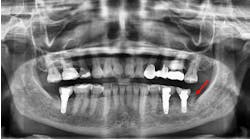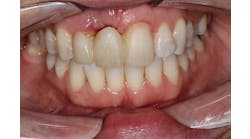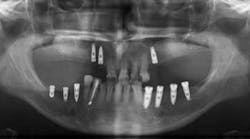Journal of the California Dental Association features dental student research
The November issue of the Journal of the California Dental Association is dedicated to highlighting student research and includes papers from four of the six dental schools in California.
The first article, titled “Volumetric Assessment of Cleft Lip and Palate Defects Using Cone Beam Computed Tomography,” discusses results of a study that utilized cone beam computed tomography to generate three-dimensional reconstructions and volumetrically assess unilateral cleft lip and palate defects. The authors explore a possible avenue to improve the clinical success of bone graft procedures in cleft lip and palate cases by predetermining the bone donor site and the volume of graft material required for the recipient site. The authors found that CBCT imaging and analysis can be used to estimate the volume of these defects.
RELATED:Cleft lip and palate present different challenges throughout child development
“In this issue, we focus on the research of our dental students and thank them for their commitment to improving patient care through research,” said Kerry K. Carney, DDS, editor-in-chief of the Journal. “Together with their faculty mentors, these students have created exceptional articles covering basic and clinical sciences.”
The second article, “Evaluation of Serum Biomarkers Il-17 and CTX for BRONJ: A Pilot Clinical Case-Control Study,” evaluates whether interleukin-17 and C-telopeptide correlate with development of bisphosphonate-related osteonecrosis of the jaw (BRONJ). The authors find that both markers were significantly higher in BRONJ, suggesting altered immune responses and bone remodeling may play roles in BRONJ development.
RELATED:International endodontologists offer first-hand recommendations
In the third article, titled “Photodynamic Therapy of Porphyromonas Gingivalis Via Liposome-Encapsulated Photosensitizers,” authors investigate the ability of liposomes with different charge to bind P. gingivalis using a fluorescent lipid incorporated in the liposome membrane. This study demonstrates how light activation of a photosensitizing agent can enhance cytotoxicity and be of beneficial use in the treatment of periodontal pathogens.
The last article, “Expression of EMMPRIN Modulates Mediators of Tumor Invasion in Oral Squamous Cell Carcinoma,” explores how extracellular matrix metalloproteinase inducer (EMMPRIN) may be a potential therapeutic target.
For more information on the California Dental Association, visit cda.org.




